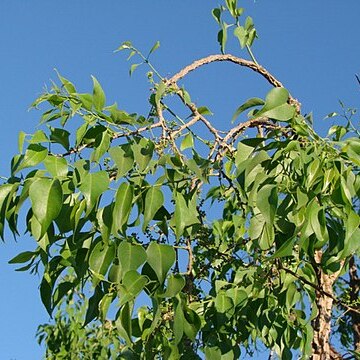Dioecious trees or shrubs, sometimes vinelike. Leaves glabrous. Inflorescence a raceme with 1-3 flowers per bract, bracts peltate, bracteoles minute, rachis glabrous or puberulous. Flowers pedicellate, 4-5-merous, unisexual; tepals free, glabrous or puberulous; stamens with filiform filament, exceeding the perianth; disc lobed or annular to urceolate; pistil with sessile stigma, in male flowers pistil rudimentary. Drupe ellipsoid, to 2.5 cm long.

